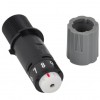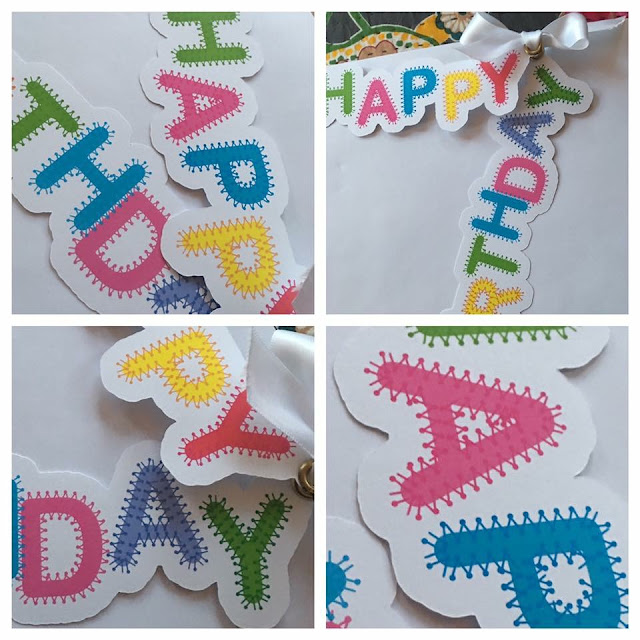Hello, Janet here again.
Today I have a 3D model-making project with some tips for cutting thicker cardstock on the Silhouette CAMEO® 3. For this project I used 240gsm A3 Black card. I have found that black, and some other dark colours of card, can be trickier to cut, and need higher settings than lighter colours. Here I'll show how I cut the black card pieces for this
Big Ben Lantern by Jennifer Rush.
WHAT YOU'LL NEED
Silhouette Vellum (for the windows)
Vinyl - Matte Removable and
Clear Transfer Tape (for the clock face)
Black Heavy-weight Card (A3 or 12 in. x 12 in.)
Painter's Tape (Washi or Micropore Tape works too)
Liquid Card Adhesive
Double-sided Adhesive Tape
Flameless LED Candle
Downloaded
Big Ben Lantern File by Jennifer Rush (#135986)
STEP 1: PREPARE THE FILE
Open the file in the Silhouette Studio® software. Change the Design Page Settings to match your paper size (12in. x 12in. or A3) and mat size (Cameo 12in. x 12in. or Cameo 12in. x 24in.). Adjust the size of the complete file as necessary (select all elements, hold down Shift and drag one of the white squares [sizing handles] until you have the size you want). I made the whole file a little bigger so that the tower pieces were as big as they could be and still fit on a piece of A3 card.
Move the auxiliary pieces (non card pieces) off the mat and arrange the card elements. I offset the large pieces from each other a little too.
STEP 2: PREPARE TO CUT
Mount the card firmly onto the cutting mat. Use the larger 24-Inch by 12-Inch Cutting Mat if you are cutting from A3 card. Add some painter's tape at each corner of the card to ensure that it won't shift. In addition, remember to pull the drawer out at the front and extend the extra support pieces to keep the mat as flat as possible (I often forget it is there). Ensure that there is room to the front and back of the machine for the larger mat to move freely.
STEP 3: ADJUST CUT SETTINGS
Carry out a Test Cut and adjust your settings accordingly. Try and use as low a blade setting as you can, thickness being less important. In fact, consider cutting thicker, or any new media, as a 3 step process:
- Test Cut
- First Cut (through the top layer)
- Final Cut (to the final required depth)
It is taking me a little while to get used to the AutoBlade that comes with the Silhouette CAMEO
® 3, and I find that the default settings are sometimes too high for my media. I found this to be the case when I used the default Coverstock settings (Blade 5, Speed 1, Thickness 31) and the Test Cut function. This was apparent because the blade left cut marks on the mat and shifted the triangle away from the mat surface.
TIP: There are excellent instructions on how to ascertain the initial blade depth for any type of cuttable media for the original Silhouette black or blue blades from Brian at GraphtecGB in his post here. To understand how the blades work read Nadine's post here.
After a little trial and error I found the ideal initial setting for my card was Blade 2, Speed 2, Thickness 22. It then required a second pass at Blade 2, Speed 2, Thickness 27, without removing the mat between cuts. I would expect the cut settings for the ratchet blade to be higher, and closer to the default settings.
TIP: Your settings may vary considerably from mine as there are so many variables (blade age and sharpness, stickiness of cutting mat, thickness as well as density of the card etc.) However, the principle that I'm recommending with thick and difficult cardstock is that the first cut should be deep enough to at least cut through the top surface without shifting the card. Then the subsequent pass (possibly with a higher thickness setting) deep enough to complete the cut, following path of the preceding one.
I've also found that is a good idea to click on the media (i.e. Coverstock) to open the Editing dialogue section to check that the AutoBlade is actually selected, as the Ratchet Blade is currently the software's default.
Cut your pieces and remove them from the mat.
STEP 4: CUTTING THE AUXILIARY PIECES
Cut the auxiliary pieces; vellum for the windows, and vinyl for the clock faces. After using the test cut function I reduced both settings from their defaults.
Tip: Vinyl is a great medium for cutting small details and being self adhesive means there is no danger of excess glue messing up the vellum windows).
STEP 5: PREPARING THE AUXILIARY PIECES
Remove the excess vinyl from around the clock faces then transfer the faces to the vellum squares using clear transfer tape.
STEP 6: ASSEMBLING THE MODEL
The file designer Jennifer Rush has provided a full set of assembly instructions for the model. The instructions are accessible from the design's
details in the Silhouette Design Store and the link is also available in the Show Properties information from the file's icon in your download library. I have written more about accessing this information in a recent post (
Preview Files in Silhouette Studio®).
Attach the vellum pieces with double-sided tape.
Pre-fold the card pieces prior to adhering them together with liquid card adhesive.
STEP 7: FINISHING TOUCHES
Once the model is assembled place an LED candle inside the model to illuminate it from within.
Unfortunately, my LED candles were either too wide or too short for the model and so I rigged up this little cheat. It is a short LED candle (votive size) balanced on an old spice jar. Not quite tall enough, but not far off.
Here is the finished model lit from within.
I hope this has given you some help with cutting thicker card successfully with your Silhouette CAMEO
® 3.
Bye for now,
DESIGNS USED:
PRODUCTS USED:




























































